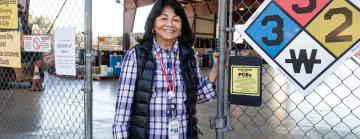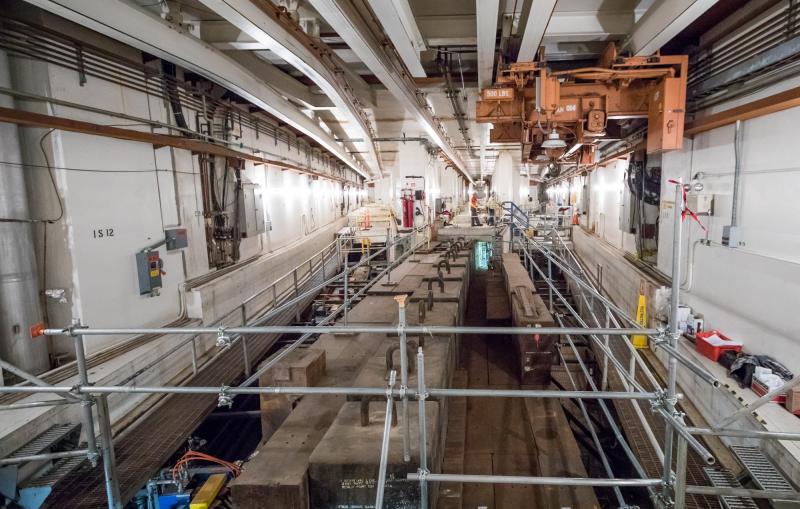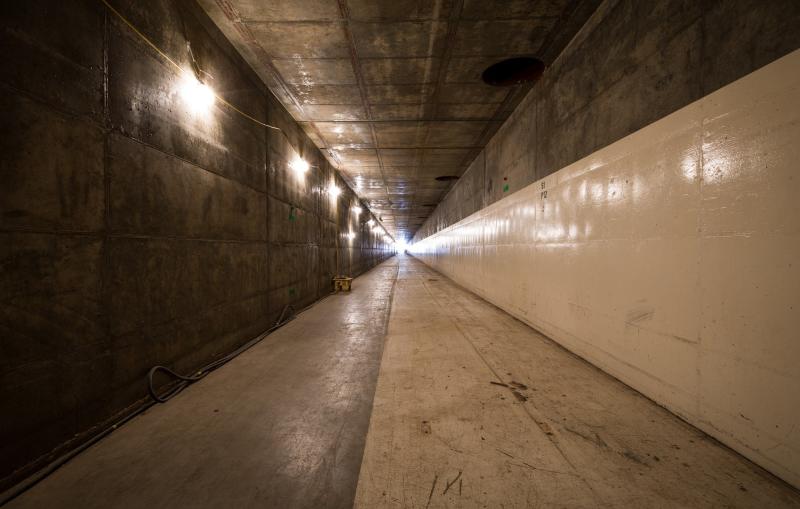A day in the life of a chemical and waste manager
Overseeing the safe disposal of chemicals and waste at SLAC has turned into an environmental mission for Yolanda Pilastro.
By Lisa Caracciolo
Properly disposing of chemical and waste materials calls for stringent protocols and adherence to strong safety guidelines. Imagine taking this tough, seemingly dirty job and transforming it into something green and clean.
For chemist Yolanda “Yoli” Pilastro, head of chemical and waste management in the ESH Division at the Department of Energy’s SLAC National Accelerator Laboratory, the job goes beyond meeting strict federal, state and local standards for waste disposal set by agencies such as the EPA, OSHA and DOE. Her aim, whenever possible, is to recycle, repurpose or reclaim that waste.
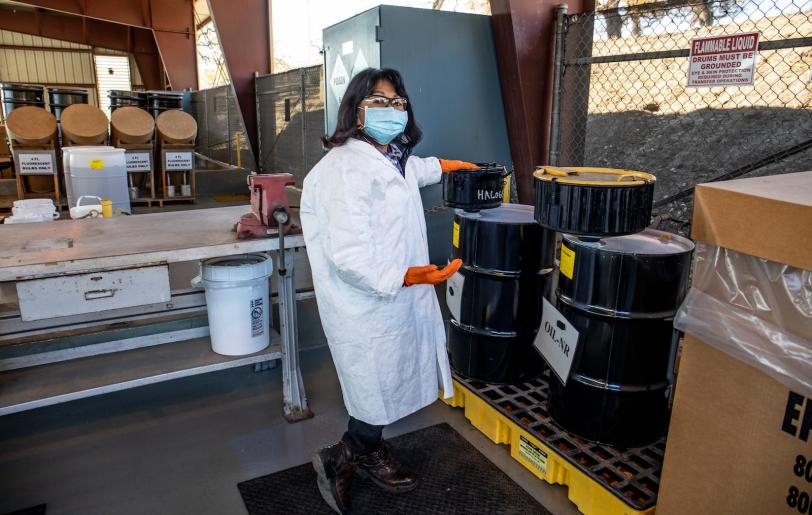
“A lot of hazardous waste in the U.S. is still simply treated and buried,” she says. “This is an area I identified where my team could make a difference.”
Pilastro has made it her job during her 20 years here to find innovative ways to turn waste management into green solutions that are good for the environment. A pleasant byproduct of this is it has helped SLAC save some greenbacks at the same time.
Finding green disposal solutions
Outside-the-box thinking about hazardous waste disposal has not only earned Pilastro recognition at SLAC, but also garnered the attention of a White House award recognition program. In 2001, she received the Closing the Circle Certificate of Achievement for efforts to not only remove highly flammable ethane gas tubes, but to give them new uses at a facility in Texas.
“They were 38 ethane tubes remaining from experiments on the former Stanford Linear Collider, so through my field contacts I found a distributor, Airgas, that provided the transfer to a Texas facility, saving SLAC upwards of $100,000 in transportation and disposal costs,“ she says.
A few years later, she received the EPA Champions of Green Government Award in 2003 for waste diversion projects that included returning empty gas cylinders to manufacturers; converting empty 55-gallon drums into metal recyclables; finding ways to reuse chemicals; and establishing a more robust waste classification system. She even worked with PG&E to transport a large transformer from SLAC’s master substation to one of PG&E’s substations for use as a back-up generator.
For SLAC, diverting waste has often had the bonus boomerang effect of eliminating the expense of sending it for treatment, storage, or disposal at regulated facilities.
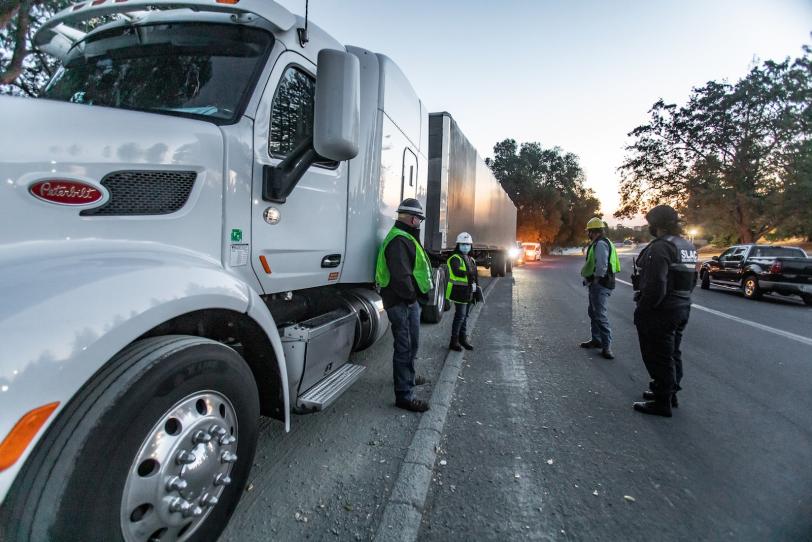
Wearing many hard hats
Pilastro’s resourcefulness and ability to shift directions on the job was put to good use when the coronavirus pandemic arrived last March. She’s a volunteer at California Life Sciences Association, and sprang into action when the organization offered to provide personal protective gear and hand sanitizers, all free of charge, at a time when these supplies were low but in high demand.
“I applied immediately by writing a summary of all the great work that we do at SLAC and we were awarded 70,000 surgical disposable masks and a thousand 8-ounce bottles of sanitizers,” she says.
She also put her chemistry background to good use at the onset of the pandemic by making “clean as you go” 70% isopropyl alcohol disinfectant solution for cleaning equipment and surfaces at the lab.
When she’s not supervising annual inspections with the San Mateo County Environmental Health Department, she supports project safety for the lab’s Linac Coherent Light Source upgrade project, LCLS-II, conducting regular walk-throughs to ensure that safety protocols are being followed in day-to-day activities. This includes taking the lead as cryomodules arriving from partner labs are methodically moved through the SLAC underground tunnel, which is referred to as an adit.
The highlight of her career at SLAC did not come in the form of an award recognition. Instead, she says it was a lunch invitation from Director Chi-Chang Kao in 2013, thanking her for a successful county inspection of the lab’s plating shop and hazardous waste yard.
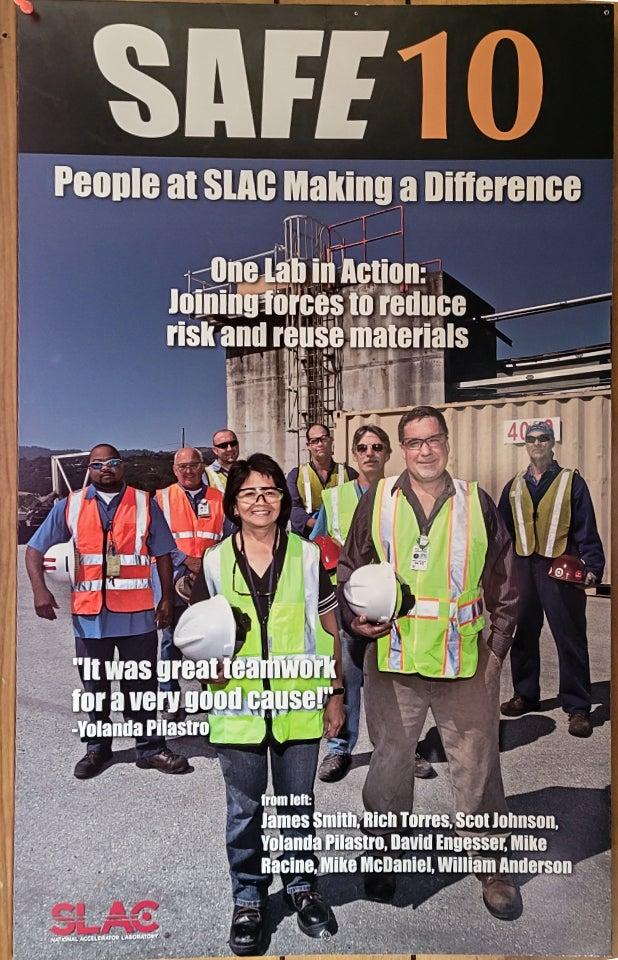
Putting chemistry to work
Growing up in the Philippines, Pilastro wanted to be a doctor, but her dad told her, “’We have a doctor and electrical engineer in the family already – find another scientific profession,’” she recalls. She chose chemistry, and shortly after earning her bachelor’s degree and chemist certification, she came to the states to work for the American Tobacco Company, analyzing tobacco leaves for their nicotine and tar content and health effects.
Akin to the compliance work she does today, Yoli at one time worked closely with the Food and Drug Administration while serving as plant manager for a pharmaceutical company, Stiefel Laboratories. Some of her other stops along the way to SLAC included working with Aerojet, AMD, Chevron, Fairchild, HP, Idaho Power, PG&E, Raytheon and Shell.
In her free time, Pilastro enjoys traveling, cooking and hitting the slopes at Sunshine Village Ski Resort in Banff, British Columbia. On the job, however, being told by county inspectors and the DOE that our waste management program is best in class is what she cherishes the most.
For questions or comments, contact the SLAC Office of Communications at communications@slac.stanford.edu.
SLAC is a vibrant multiprogram laboratory that explores how the universe works at the biggest, smallest and fastest scales and invents powerful tools used by scientists around the globe. With research spanning particle physics, astrophysics and cosmology, materials, chemistry, bio- and energy sciences and scientific computing, we help solve real-world problems and advance the interests of the nation.
SLAC is operated by Stanford University for the U.S. Department of Energy’s Office of Science. The Office of Science is the single largest supporter of basic research in the physical sciences in the United States and is working to address some of the most pressing challenges of our time. For more information, visit energy.gov/science.
